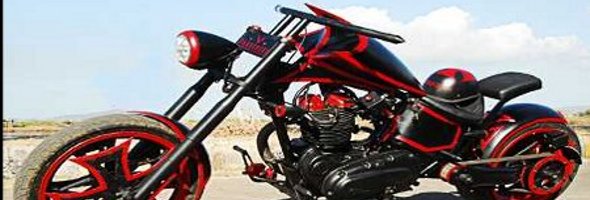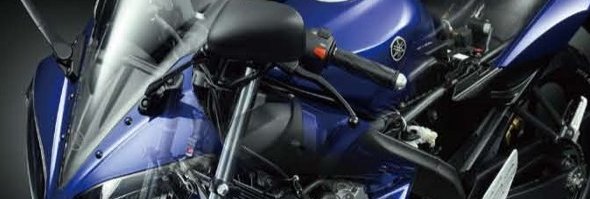| • | CTRL+C (Copy) |
| • | CTRL+X (Cut) |
| • | CTRL+V (Paste) |
| • | CTRL+Z (Undo) |
| • | DELETE (Delete) |
| • | SHIFT+DELETE (Delete the selected item permanently without placing the item in the Recycle Bin) |
| • | CTRL while dragging an item (Copy the selected item) |
| • | CTRL+SHIFT while dragging an item (Create a shortcut to the selected item) |
| • | F2 key (Rename the selected item) |
| • | CTRL+RIGHT ARROW (Move the insertion point to the beginning of the next word) |
| • | CTRL+LEFT ARROW (Move the insertion point to the beginning of the previous word) |
| • | CTRL+DOWN ARROW (Move the insertion point to the beginning of the next paragraph) |
| • | CTRL+UP ARROW (Move the insertion point to the beginning of the previous paragraph) |
| • | CTRL+SHIFT with any of the arrow keys (Highlight a block of text) |
| • | SHIFT with any of the arrow keys (Select more than one item in a window or on the desktop, or select text in a document) |
| • | CTRL+A (Select all) |
| • | F3 key (Search for a file or a folder) |
| • | ALT+ENTER (View the properties for the selected item) |
| • | ALT+F4 (Close the active item, or quit the active program) |
| • | ALT+ENTER (Display the properties of the selected object) |
| • | ALT+SPACEBAR (Open the shortcut menu for the active window) |
| • | CTRL+F4 (Close the active document in programs that enable you to have multiple documents open simultaneously) |
| • | ALT+TAB (Switch between the open items) |
| • | ALT+ESC (Cycle through items in the order that they had been opened) |
| • | F6 key (Cycle through the screen elements in a window or on the desktop) |
| • | F4 key (Display the Address bar list in My Computer or Windows Explorer) |
| • | SHIFT+F10 (Display the shortcut menu for the selected item) |
| • | ALT+SPACEBAR (Display the System menu for the active window) |
| • | CTRL+ESC (Display the Start menu) |
| • | ALT+Underlined letter in a menu name (Display the corresponding menu) |
| • | Underlined letter in a command name on an open menu (Perform the corresponding command) |
| • | F10 key (Activate the menu bar in the active program) |
| • | RIGHT ARROW (Open the next menu to the right, or open a submenu) |
| • | LEFT ARROW (Open the next menu to the left, or close a submenu) |
| • | F5 key (Update the active window) |
| • | BACKSPACE (View the folder one level up in My Computer or Windows Explorer) |
| • | ESC (Cancel the current task) |
| • | SHIFT when you insert a CD-ROM into the CD-ROM drive (Prevent the CD-ROM from automatically playing) |
| • | CTRL+SHIFT+ESC (Open Task Manager) |
skip to main |
skip to sidebar
A vast ocean of new newer & newest techniques enriching and serving for the general people
Chemistry World
See who is online
Google Talk
Search Bar
Labels
- Adsense (1)
- Anti hacking (1)
- Anti virus trick (2)
- Block tech (3)
- Blogging (3)
- Boot tricks (1)
- Browser tech (7)
- Cleaning tips (1)
- Download zone (2)
- Drive tech (3)
- Email tips (1)
- Facebook hacks (3)
- Facebook tech (1)
- Folder tech (4)
- Fonts Tricks (2)
- Funny pranks (6)
- Hacking tech (40)
- Hard disk tech (4)
- HTML Tips (1)
- IP hacks (1)
- Locker (1)
- Logo (1)
- Mobile tricks (10)
- Notepad fun (3)
- other (3)
- overclocking (1)
- Ping tech (1)
- Ram Tricks (4)
- Rapidshare hack (2)
- Repair tech (1)
- Security (1)
- Speeding up tips (7)
- Tech shortcut (6)
- Tech trouble (8)
- Twitter hack (1)
- USB tricks (1)
- Virus code (8)
- VOIP (1)
- Windows 7 tips (3)
- Windows tech (2)
- Wordpress (1)
- Xp tricks (12)
- Yahoo hacks (1)
- yotube and google tricks (2)
- Youtube hacks (3)
Blog Archive
-
▼
2010
(164)
-
▼
May
(147)
- Destroy your enemy pc by mailing
- Bat_To_Exe_Converter for Virus coding purpose
- How to rename recycle bin
- How do i change my ip address
- How to hack twitter accounts
- How to increase your intenet speed
- Hacking into another persons computer
- How to hack into a computer - Netbios hacking
- Bypass rapidshare download timer:Rapidshare hack
- How to hack yahoo messenger password
- How to Create a trojan in .bat file
- Download video from youtube with out software
- How to hack youtube account - Phishing
- How to delete undetecteble file in windows xp
- Make windows genuine in a minute
- Hack administrators password through guest login
- List of 10 best Facebook hacks
- Hack Facebook,hotmail and yahoo account
- How do i block and unblock internet sites
- Hack hotmail password using a keylogger
- Common methods to hack a website
- How to get a free rapidshare premium account
- Hacking myspace account password with winspy keylo...
- List of 100+ rapidshare premium link generators
- How to view private facebook profiles
- How to Trace the location with Ip address
- 4 ways on How to hack facebook password
- Hide your IP address
- How to fix your infected computer
- 15 tips on How to survive as a hacker
- Free Kasperspy 2010 antivirus license
- How to hack a remote Computer with telnet
- Use Kaspersky without a key
- Hack your friends account password
- How to run a trial software forever
- Hack a website and make images flying
- How to hack a PDF password for free
- Remote password hacking software - winspy
- My Porn Blocker - Block Porn sites and Protect you...
- Nokia cell phone hacking codes
- How to monitor a Cellphone - Spy Phone Gold
- Make virus in just one minute
- How to make an excellent worm virus
- How to sent a trojan horse virus as txt file
- How to make a facebook virus
- Facebook Password Hacker and Cracker
- Speed up your PC by 300% with Perfect optimizer
- How to secure your network from Trojans
- How to bypass/hack a Firewall
- Add Password To Open Or View USB Flash Drive Contents
- Remove Saved Passwords From Google Chrome, Mozilla...
- Get Notified When Your Facebook Account Gets Hacked
- Fix 21 Common Windows 7 Problems With 7 Quick Fix ...
- Stop Google.com To Redirect To Google.co.in or You...
- Block Virus Transfer From USB Flash Drive
- Not able to show hidden files and folders
- Remove Write Protection On USB Pen Drive or Memory...
- Not able to open drives on hard disk by double click
- Fixes to common Computer Mouse problems
- Fix up flickering problem with your old monitor
- Error message on startup “Windows\System32\config\...
- Single click Shutdown
- Funny browser
- Cool DOS Commands
- 3) Switch keys on keyboard
- The Blue Screen of Death
- Warning Message
- More hacks of Windows 7
- Use hidden international wallpapers and themes win...
- The Bumper List of Windows 7 Secrets
- Coolest Firefox Tricks Ever
- HTML Codes and Tips
- Speed up your internet by 20%
- Making an image or Cloning Hard disk
- Install Windows xp in less than 15 minutes
- Tips for overclocking your CPU
- Use Your Pen Drive as Ram
- A fake virus that helps
- Hack Your XP Login Screen
- Chinese Mobile Secret Codes
- LG Secret Codes
- Samsung Secret Codes
- Sony Ericsson Secret Codes
- Motorola Secret Codes
- NOKIA SECRET CODES
- Get an unique email address
- Fill up your forms in the web automatically
- Want to change windows to your name
- How to recover you crashed hard disc
- Computer Repairs Tips for Emergencies
- Keyboard Shortcut for Windows
- Block any website without any softwares
- Funny Computer Tricks : Shake your Browser
- Check your NOKIA moblie Original or Not
- Install Windows xp in less than 15 minutes
- Recover Windows XP Administrator Password
- Freeup or clean RAM using Notepad
- Display a shortcut of Removable Drives on desktop
- Enter and Browse any Forum without registering – Hack
- Play Around with Notepad for Fun
-
▼
May
(147)
Hit counter
Powered by Blogger.
Followers
Back To Top © Copyright 2010 Enriched Technotips
Template by rich Around The Web | Powered by Blogger




0 comments:
Post a Comment